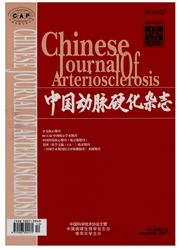

 中文摘要:
中文摘要:
Proprotein convertase subtilisin/kexin 类型 9 (PCSK9 ) ,也已知的同样神经的 apoptosis 调整了 convertase (NARC1 ) ,是胆固醇新陈代谢的一个关键调节的人。PCSK9 由从肝的房间的膜陪同低密度的脂蛋白受体(LDLR ) 进 lysosomes 增加低密度的脂蛋白胆固醇的浆液集中,在 LDLR 被降级的地方。由于在类脂化合物新陈代谢的 PCSK9 的重要性,可观的努力在开发指向 PCSK9 降低浆液类脂化合物层次的药在过去的十年被作了。不过,一些问题和挑战留下。在这评论我们首先描述 PCSK9 和它的基因多型性的结构和功能。我们然后讨论 PCSK9 的药理学目标的各种各样的图案,包括堵住到肝的 LDLR (模仿的肽, adnectins ,和 monoclonal 抗体)的 PCSK9 的绑定的那些,禁止 PCSK9 表示(定期聚类 interspaced 短 palindromic repeats/Cas9 站台,小分子, antisense oligonucleotides ,并且小介入 RNA ),并且防碍 PCSK9 分泌物。最后,这评论在这块地里加亮未来挑战,包括与 PCSK9 monoclonal 抗体,在中央神经系统的 PCSK9 禁止者的有限用途,和 PCSK9 禁止者的划算联系的安全担心。
 英文摘要:
英文摘要:
Proprotein convertase subtilisin/kexin type 9 (PCSK9), also known as neural apoptosis regulated convertase (NARC1), is a key modulator of cholesterol metabolism. PCSK9 increases the serum concentration of low-density lipoprotein cholesterol by escorting low-density lipoprotein receptors (LDLRs) from the membrane of hepatic cells into lysosomes, where the LDLRs are degraded. Owing to the importance of PCSK9 in lipid metabotism, considerable effort has been made over the past decade in developing drugs targeting PCSK9 to lower serum lipid levels. Nevertheless, some problems and challenges remain. In this review we first describes the structure and function of PCSK9 and its gene polymorphisms. We then discuss the various designs of pharmacological targets of PCSK9, including those that block the binding of PCSK9 to hepatic LDLRs (mimetic peptides, adnectins, and monoclonal antibodies), inhibit PCSK9 expression (the clustered regularly interspaced short palindromic repeats/Cas9 platform, small molecules, antisense oligonucleotides, and small interfering RNAs), and interfere with PCSK9 secretion. Finally, this review highlights future challenges in this field, including safety concerns associated with PCSK9 monoclonal antibodies, the limited utility of PCSK9 inhibitors in the centra nervous system, and the cost-effectiveness of PCSK9 inhibitors.
 同期刊论文项目
同期刊论文项目
 同项目期刊论文
同项目期刊论文
 期刊信息
期刊信息
